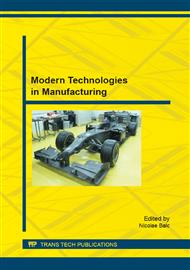[1]
S. Schweiger, Let the sun shine in, Information on http: /www. ee. co. za/article/siemens-111-02-let-the-sun-shine-in. html (consulted in January 2015).
Google Scholar
[2]
L. Hardesty, Solite Brings Sunlight to Interior Spaces, Information on http: /www. energymanagertoday. com/solite-brings-sunlight-to-interior-spaces-089094/ (consulted in January 2015).
Google Scholar
[3]
Information on http: /www. dspof. com/en/support-pgdetail-153. html (consulted in March 2015).
Google Scholar
[4]
D. Lianga, L. Monteiroa, M. Teixeiraa, M. Monteiroa, M. Pereirace, Fiber-optic solar energy transmission and concentration, Solar Energy Materials and Solar Cells, 54 (1998) 323-331.
DOI: 10.1016/s0927-0248(98)00083-x
Google Scholar
[5]
W. Grise, C. Patrick, Passive Solar Lighting Using Fiber Optics, Journal of Industrial Technology, 19 (2002) 1-7.
Google Scholar
[6]
D. Feuermann, J. M. Gordon, M. Huleihil, Light leakage in optical fibers: experimental results, modeling and the consequences for solar concentrators, Solar Energy, 72 (2002) 195-204.
DOI: 10.1016/s0038-092x(01)00100-1
Google Scholar
[7]
A. Tsangrassoulisa, L. Doulosa, M. Santamourisa, M. Fontoynontb, F. Maamarib, M. Wilsonc, A. Jacobsc, J. Solomonc, A. Zimmermand, W. Pohld, G. Mihalakakoua, On the energy efficiency of a prototype hybrid daylighting system, Solar Energy, 79 (2005).
Google Scholar
[8]
Information on http: /www. pveducation. org/pvcdrom/properties-of-sunlight/calculation-of-solar-insolation (consulted in May 2015).
Google Scholar
[9]
DIAL GmbH, DIALux 4 with new improved calculation kernel, Information on http: /www. dial. de/DIAL/fileadmin/download/dialux/wissen/Dx4_Rechenkern_eng. pdf (consulted in July 2015).
Google Scholar
[10]
Information on http: /pveducation. org/pvcdrom/properties-of-sunlight/measurement-of-solar-radiation (consulted in April 2015).
Google Scholar
[11]
Standard EN 12464-1: 2011, Light and lighting - Lighting of work places - Part 1: Indoor work places.
DOI: 10.3403/02729981u
Google Scholar
[12]
C. Sapia, Daylighting in buildings: Developments of sunlight addressing by optical fiber, Solar Energy, 89 (2013) 113-121.
DOI: 10.1016/j.solener.2012.12.003
Google Scholar
[13]
R. Ghinea, D. Popescu, C. Neamtu, D. Hurgoiu, F. Popister, Using Delmia V5 for Human Activity Improvement in an Assembly Line Production, Applied Mechanics and Materials, 657 (2014) 353-358.
DOI: 10.4028/www.scientific.net/amm.657.353
Google Scholar
[14]
J. Bhatt, H.K. Verma, Design and Development of Wired Building Automation Systems, Energy and Buildings, available online 12 March 2015 (in press, corrected proof), ISSN 0378-7788.
DOI: 10.1016/j.enbuild.2015.02.054
Google Scholar


